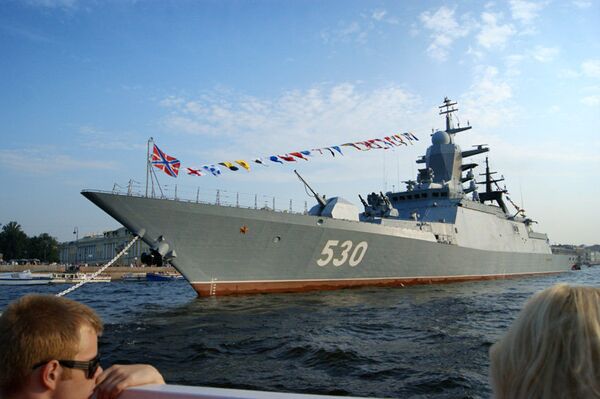On November 27, Russia celebrates Marines Day. The first Marine regiment was formed on that day in 1705 for the purposes of taking over enemy ships and landing on hostile shores. In the 300 plus years since, the Marines have had their ups and downs. The fate of the Marines has always depended on the Navy, and the fighting force reached its zenith in the latter half of the 20th century, when the Soviet Navy was second only to U.S. Navy.
What the Marines do
The modern Navy is the only branch of the military that can carry out missions at sea, on the ground, in the air and underwater, ranging from tactical operations in local conflicts to strategic operations during a global nuclear war. The Marines are an essential element of the Navy's versatility and self-sufficiency.
The key to understanding the capabilities of the modern Marines lies in expeditionary strike groups, the backbone of which is formed by Marine units deployed on amphibious assault ships. These groups include warships, aviation and auxiliary vessels and are capable of carrying out wide-ranging missions, up to and including conducting a small war.
The Marines would not be nearly as effective without amphibious assault ships, which can carry a Marine battalion (or even a regiment) with equipment and armaments. From these ships Marines can be deployed by boat or helicopter. Unlike traditional big vessels that land Marines on the shore, these ships can stay beyond the horizon. This adds the element of surprise to a landing and reduces the risk that the landing ship will be damaged or destroyed by enemy fire.
These groups can be used both in combat and as a powerful tool of influence. In concert with diplomacy, they can help shape developments in different regions in Russia's favor. They can also be used for peacekeeping, rescue and other humanitarian missions. The U.S. Marines, for instance, helped Haiti to restore order and provide relief to the population after the devastating earthquake this year.
The United States has the largest number of amphibious assault ships and is the only country with experience forming expeditionary strike groups. Other countries, such as France, Spain and South Korea, have started forming them relatively recently and are only beginning to gain experience.
New horizons
The Defense Ministry's plans to build or purchase fully equipped amphibious assault ships for the Navy - and the greater expeditionary capabilities that these plans imply - are often met with misunderstanding. A pessimistic outlook on our naval capabilities is justified by the past 20 years. At the same time, it is important to understand a few points.
As Russia gains more economic power over time, it is bound to require effective instruments of hard and soft power, which will allow it to influence developments not only on the ground in adjacent countries, but also in the world's oceans (whose resources are becoming increasingly important) and in important coastal zones. It is essential to remember that the Navy has the longest restoration cycle of all the armed services - it takes years to build ships, form units, and train personnel.
To prepare for potential challenges in the 2030s and 2040s, Russia must immediately start building ships and developing concepts for their use. All the more so considering that naval operations will become increasingly important owing to the expansion of freight traffic by sea and the growing development of shelf resources and fishing. Russia's Far East will also become more important owing to the economic potential of the local waters and shelf, and the unresolved disputes between countries in the region, from the Korean Peninsula to the Kuril Islands.
Where do we stand today?
Russia currently has several Marine brigades, regiments, individual battalions and squadrons that are part of its four fleets and the Caspian Flotilla. Structurally, Marine units are subordinate to the head of the Navy's Coastal Forces.
Without amphibious assault ships and large helicopter carriers, Russia cannot have any expeditionary potential. The capabilities of the Marines are mostly limited to coastal defense of its naval bases or tactical landing operations nearby. A considerable part of Marine landing ships and boats have become obsolete and need to be replaced.
The Defense Ministry understands this and plans to order amphibious assault ships (Mistral class ships, most likely) and to continue building next-generation large landing ships. The leading ship of the new Project 11711 Ivan Gren will be commissioned next year.
In parallel, Russia is upgrading Marine combat and auxiliary equipment by producing new armored personnel carriers, infantry fighting vehicles, self-propelled units and trucks. To make Marine units more effective, they must be provided with the latest communication and control systems, drones and other hardware. This will make it easier to command Marine forces and decrease field losses.
The views expressed in this article are the author's and may not necessarily represent those of RIA Novosti.

